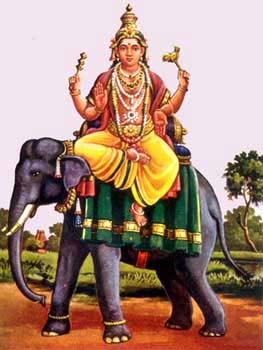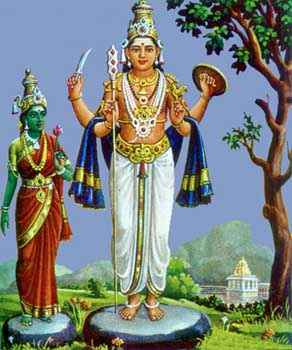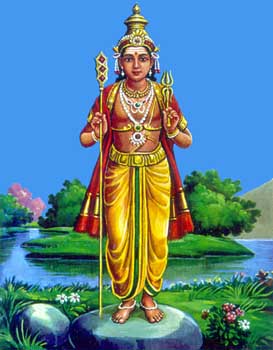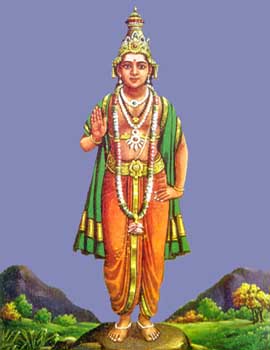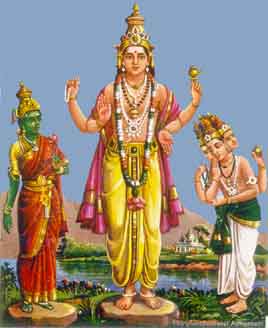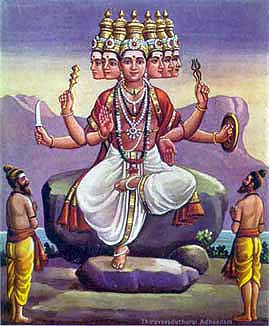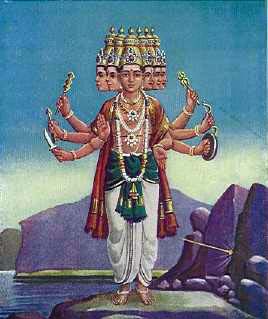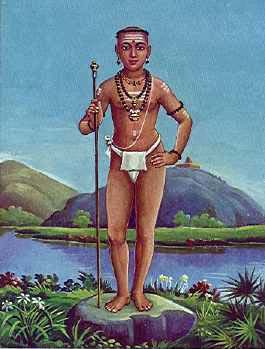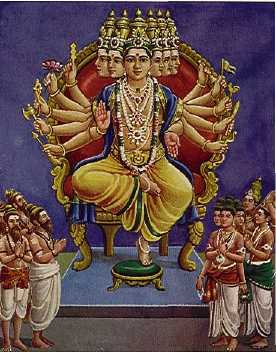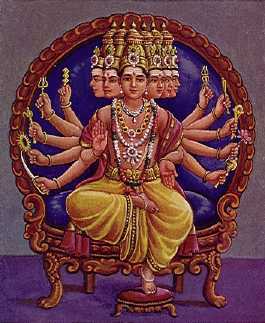Rutger Kortenhorst, a Sanskrit teacher in John Scottus School in Dublin, Ireland, speaks to parents of his school children on the value of teaching Sanskrit to children, based on his own experience with the language.
Good evening Ladies and Gentlemen, we are going to spend an hour together looking at the topic `Why does my child study Sanskrit in John Scottus?' My bet is that at the end of the hour you will all have come to the conclusion that your children are indeed fortunate that this extraordinary language is part of their curriculum.
Firstly, let us look at Why Sanskrit for my child? We are the only school in Ireland doing this language, so this will need some explaining.
There are another 80 JSS-type schools in UK and also around the world that have made the same decision to include Sanskrit in their curriculum (they are all off-shoots from the School of Philosophy).
Secondly, how is Sanskrit taught? You may have noticed your son or daughter singing Sanskrit grammar songs in the back of the car just for the fun of it on the way home from school. I'll spend some time telling you HOW we approach teaching Sanskrit now since my learning from India.
But Why Sanskrit?
To answer that we need to look at the qualities of Sanskrit. Sanskrit stands out above all other languages for its beauty of sound, precision in pronunciation and reliability as well as thoroughness in every aspect of its structure. This is why it has never fundamentally changed unlike all other languages. It has had no need to change being the most perfect language of Mankind ever.
If we consider Shakespeare's English, we realize how different and therefore difficult for us his English language was although it is just English from less than 500 years ago. We struggle with the meaning of Shakespeare's English or that of the King James Bible. Go back a bit further and we don't have a clue about the English from the time of Chaucer's `Pilgrim's Progress' from around 700 AD. We cannot even call this English anymore and now rightly call it Anglo-Saxon. So English hadn't even been born!
All languages keep changing beyond recognition. They change because they are defective. The changes are in fact corruptions. They are born and die after seven or eight hundred years –about the lifetime of a Giant Redwood Tree- because after so much corruption they have no life left in them.
Surprisingly there is one language in the world that does not have this short lifespan. Sanskrit is the only exception. It is a never-dying constant. The reason for the constancy in Sanskrit is that it is completely structured and thought out. There is not a word that has been left out in its grammar or etymology, which means every word can be traced back to where it came from originally. This does not mean there is no room for new words either. Just as in English we use older concepts from Greek and Latin to express modern inventions like a television: `tele [far] – vision [seeing]' or `compute –er'.
Sanskrit in fact specializes in making up compound words from smaller words and parts. The word `Sams – krita' itself means `completely – made'.
So what advantages are there to a fundamentally unchanging language? What is advantageous about an unchanging friend, say? Are they reliable? What happens if you look at a text in Sanskrit from thousands of years ago?
The exceptional features of Sanskrit have been recognised for a few centuries all over the world, so you will find universities from many countries having a Sanskrit faculty. Whether you go to Hawai, Cambridge or Harvard and even Trinity College Dublin has a seat for Sanskrit –although it is vacant at present. May be one of your children will in time fill this position again?
Although India has been its custodian, Sanskrit has had universal appeal for centuries. The wisdom carried by this language appeals to the West as we can see from Yoga and Ayurvedic Medicine as well as meditation techniques, and practical philosophies like Hinduism, Buddhism and most of what we use in the School of Philosophy. It supports, expands and enlightens rather than conflicts withlocal traditions and religions.
The precision of Sanskrit stems from the unparalleled detail on how the actual sounds of the alphabet are structured and defined. The sounds have a particular place in the mouth, nose and throat that can be defined and will never change.
This is why in Sanskrit the letters are called the `Indestructible' [aksharáni]. Sanskrit is the only language that has consciously laid out its sounds from first principles. So the five mouth-positions for all Indestructible [letters] are defined and with a few clearly described mental and physical efforts all are systematically planned: [point out chart]
After this description, what structure can we find in a, b, c, d, e, f , g…? There isn't any, except perhaps that it starts with `a', and goes downhill from there.
Then there is the sheer beauty of the Sanskrit script as we learn it today. [Some examples on the board]
You may well say: `Fine, but so why should my son or daughter have yet another subject and another script to learn in their already busy school-day?' In what way will he or she benefit from the study of Sanskrit in 2012 in the Western world?
The qualities of Sanskrit will become the qualities of your child- that is the mind and heart of your child will become beautiful, precise and reliable.
Sanskrit automatically teaches your child and anybody else studying it to pay FINE attention due to its uncanny precision. When the precision is there the experience is, that it feels uplifting. It makes you happy. It is not difficult even for a beginner to experience this. All you have to do is fine-tune your attention and like music you are drawn in and uplifted. This precision of attention serves all subjects, areas and activities of life both while in school and for the rest of life. This will give your child a competitive advantage over any other children. They will be able to attend more fully, easily and naturally. Thus in terms of relationships, work, sport– in fact all aspects of life, they will perform better and gain more satisfaction. Whatever you attend to fully, you excel in and you enjoy more.
By studying Sanskrit, other languages can be learnt more easily; this being the language all others borrow from fractionally. The Sanskrit grammar is reflected in part in Irish or Greek, Latin or English. They all have a part of the complete Sanskrit grammar. Some being more developed than others, but always only a part of the Sanskrit grammar, which is complete in itself.
What Sanskrit teaches us that there is a language that is ordered, following laws unfailingly and as they are applied your child gets uplifted, not only when they grow up, but as they are saying it! This means they get an unusual but precise, definite and clear insight into language while they are enjoying themselves.
They learn to speak well, starting from Sanskrit, the mother language of all languages. Those who speak well run the world. Barack Obama makes a difference because he can speak well. Mahatma Gandhi could move huge crowds with well-balanced words. Mother Theresa could express herself with simple words which uplift us even now.
The language of the great Master Teachers of mankind from times past is all we have got after centuries and millennia, but they make all the difference. We can enter the remarkable mind of Plato through his words. If your daughter or son can express themselves well through conscious language they will be the leaders of the next generation.
Sanskrit has the most comprehensive writings in the world expressed through the Vedas and the Gita. The Upanishads –translated by William Butler Yeats have given people from all over the world an insight into universal religious feelings for more than one century now.
To know these well expressed simple words of wisdom in the original is better than dealing with copies or translations as copies are always inferior to originals. We really need clear knowledge on universal religion in an age faced with remarkable levels of religious bigotry and terrorism arising from poorly understood and half-baked religious ideas.
Culture
Vivekananda, a great spiritual leader from India revered by all in the World Religious Conference of 1880 in Chicago said:
You can put a mass of knowledge into the world, but that will not do it much good. There must come some culture into the blood. We all know in modern times of nations which have masses of knowledge, but what of them? They are like tigers; they are like savages, because culture is not there.
Knowledge is only skin-deep, as civilization is, and a little scratch brings out the old savage. Such things happen; this is the danger. Teach the masses in the vernaculars, give them ideas; they will get information, but something more is necessary; give them culture.
Sanskrit can help your child to express universal, harmonious and simple truths better. As a result you will really have done your duty as a parent and the world will reap the benefits in a more humane, harmonious and united society. Sanskrit can do this as it is the only language that is based in knowledge all the way. Nothing is left to chance.
Just think for the moment how confusing it is for a child to learn to say `rough', but `dough'. And why does the `o' in `woman' sound like an `e' in `women'? How come the `ci' in `special' is different from the `ci' in `cinema'?
Teachers may well say `Just learn it' as there is no logical explanation, but it only demonstrates to a child that it is all a bit of a hit-and-miss affair. What else does this randomness in the fundamental building-blocks of language teach a child about the world? That it's just a confusing, random chance-event? How can this give anyone any confidence?
Now go to a language where everything is following rules. Where nothing is left to chance from the humble origin of a letter to the most sophisticated philosophical idea. How will that child meet the world? Surely with confidence, clarity and the ability to express itself?
I have seen myself and others growing in such qualities, because of our contact with Sanskrit. I have just spent a year in India. Though it felt a bit like camping in a tent for a year, it was well worth it.
For many years, we taught Sanskrit like zealots i.e. with high levels of enthusiasm and low levels of understanding, to both adults in the School of Philosophy and children in John Scottus School. We did not perhaps inspire a lot of our students and may have put a number of them off the study of Sanskrit. It felt to me like we needed to go to the source.
Sanskrit teachers worth their salt need to live with people whose daily means of communication is in Sanskrit. I had already spent three summers near Bangalore at 'Samskrita Bharati' doing just that and becoming less of an amateur, but it really needed a more thorough study. So I moved into a traditional gurukulam for the year. This meant living on campus, eating lots of rice and putting up with a few power-cuts and water shortages, but by December 2009, I made up my mind that I would step down as vice-principal of the Senior School and dedicate myself to Sanskrit for the rest of my teaching life.
It felt like a promotion to me as quite a few could be vice-principal but right now which other teacher could forge ahead in Sanskrit in Ireland? [Hopefully this will change before I pop off to the next world.] With Sanskrit I'm expecting my mind to improve with age even if my body slows down a little.
Sanskrit is often compared to the full-time teacher, who is there for you 24/7 whereas the other languages are more like part-timers. The effects of studying Sanskrit on me have been first and foremost a realistic confidence. Secondly, it meant I had to become more precise and speak weighing my words more carefully. It also taught me to express myself with less waffle and therefore speak more briefly. My power of attention and retention has undoubtedly increased.
Teaching method
Now, let me explain for a few minutes, HOW Sanskrit is taught. To my surprise it is not taught well in most places in India. Pupils have to learn it from when they are around age 9 to 11 and then they give it up, because it is taught so badly! Only a few die-hards stick with it, in time teaching the same old endings endlessly to the next generation. This is partly due to India having adopted a craving to copy the West and their tradition having been systematically rooted out by colonialism.
For learning grammar and the wisdom of the East, I was well-placed in a traditional gurukulam, but for spoken Sanskrit I felt a modern approach was missing.
Then I found a teacher from the International School belonging to the Sri Aurobindo Ashram in Pondicherry. His name is Narendra. He has developed a novel, inspiring and light method to teach grammar, which doesn't feel like you do any grammar at all. At the same time it isn't diluted for beginners so you don't end up with partial knowledge. I also followed a few Sanskrit Conversation camps, which all brought about more familiarity.
Narendra says he owes his method to Sri Aurobindo and his companion The Mother who inspired him to come up with the course we now follow in Dublin. This is one of the many things The Mother said to inspire him:"Teach logically. Your method should be most natural, efficient and stimulating to the mind. It should carry one forward at a great pace. You need not cling there to any past or present manner of teaching."
This is how I would summarize the principles for teaching Sanskrit as we carry it out at present:
1. Language learning is not for academics as everyone learns to speak a language from an early age before they can read and write and know what an academic is. So why insist in teaching Sanskrit academically?
2. The writing script is not the most fundamental thing to be taught. A language is firstly made of its sounds, words and spoken sentences. [The script we use -though very beautiful- is only a few hundred years old.]
3. Always go from what is known to what is new.
4. Understanding works better than memorisation in this Age. Learning by heart should only take up 10 percent of the mental work, rather than the 90 percent rote learning in Sanskrit up to the recent present.
5. Don't teach words and endings in isolation; teach them in the context of a sentence as the sentence is the smallest meaningful unit in language.
6. Any tedious memory work which cannot be avoided should be taught in a song.
7. Do not teach grammatical terms. Just as we don't need to know about the carburettor, when we learn to drive a car.
8. The course should be finished in two years by an average student according to Narendra. This may be a little optimistic given that we are a little out of the loop not living in India, which is still Sanskrit's custodian. At present I would say it is going to be a three-year course.
9. Language learning must be playful. Use drama, song, computer games and other tricks to make learning enjoyable.
We have started on this course since September and it has certainly put a smile on our pupils' faces, which makes a pleasant change. I now feel totally confident that we are providing your children with a thorough, structured and enjoyable course. Our students should be well prepared for the International Sanskrit Cambridge exam by the time they finish –age 14/15- at the end of second year. We will also teach them some of the timeless wisdom enshrined in various verses. At present we are teaching them: "All that lives is full of the Lord. Claim nothing; enjoy! Do not covet His property"- in the original of course.
The future
Let us look at the 500 – year cycle of a Renaissance. The last European Renaissance developed three subjects: Art, Music and Science to shape the world we live in today. It had its beginning in Florence. The great Humanist Marsilio Ficino made Plato available to the masses by translating it from Greek to Latin. We live in exciting times and may well be at the beginning of a new Renaissance. It also will be based on three new subjects: Some say that these will be Economics, Law and Language.
Language has to become more universal now as we can connect with each other globally within seconds. NASA America's Space Program is actively looking at Sanskrit in relation to I.T. and artificial intelligence.
Sri Aurobindo said "…at once majestic and sweet and flexible, strong and clearly-formed and full and vibrant and subtle…".
What John Scottus pupils have said:
It makes your mind bright, sharp and clear.
It makes you feel peaceful and happy.
It makes you feel BIG.
It cleans and loosens your tongue so you can pronounce any language easily.
What Sanskrit enthusiasts like Rick Briggs in NASA have said:
It gives you access to a vast and liberating literature.
It can describe all aspects of human life from the most abstract philosophical to the latest scientific discoveries, hinting at further developments.
Sanskrit and computers are a perfect fit. The precision play of Sanskrit with computer tools will awaken the capacity in human beings to utilize their innate higher mental faculty with a momentum that would inevitably transform the mind. In fact, the mere learning of Sanskrit by large numbers of people in itself represents a quantum leap in consciousness, not to mention the rich endowment it will provide in the arena of future communication. NASA, California
After many thousands of years, Sanskrit still lives with a vitality that can breathe life, restore unity and inspire peace on our tired and troubled planet. It is a sacred gift, an opportunity. The future could be very bright.
Rick Briggs [NASA]
You may well have a few questions at this stage after which I would like to introduce you to a plant in the audience. A parent turned into a blazing ball of enthusiasm over Sanskrit grammar: John Doran. I would like him to wrap up.
I'll give NASA's Rick Briggs the last word from me:
One thing is certain; Sanskrit will only become the planetary language when it is taught in a way which is exiting and enjoyable. Furthermore it must address individual learning inhibitions with clarity and compassion in a setting which encourages everyone to step forth, take risks, make mistakes and learn.





